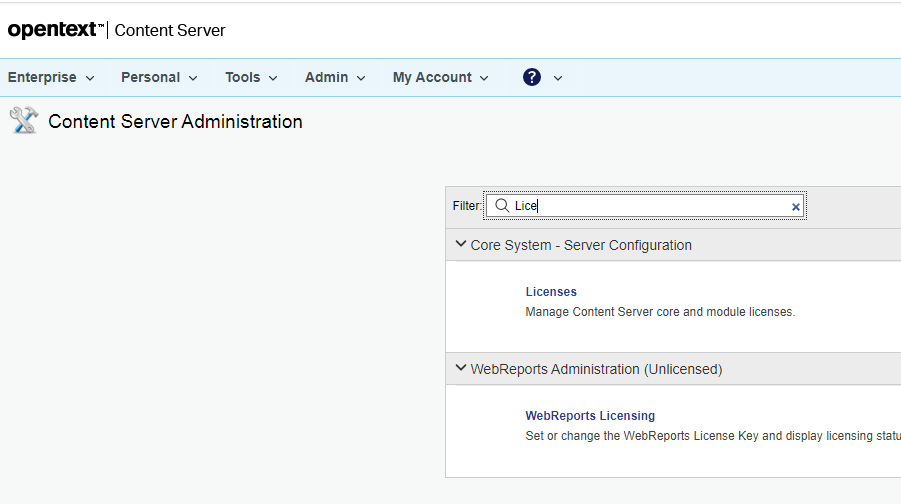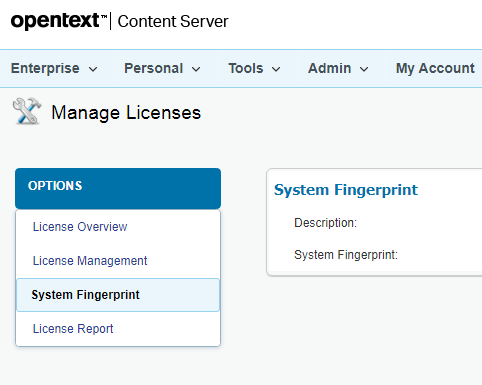Getting ready to install Module Suite¶
Overview of the Module Suite installation process¶
This guide describes the step-by-step procedure that will lead to the installation of the Module Suite on a Content Server environment, including the following components:
- Content Script
- Beautiful WebForms
- Smart Pages
Install Module Suite components separately
If you are only interested in installing a subset of the available components, please check the dedicated installation guides for additional guidance:
Script Console installation
Script Console is a special component that is part of the Module Suite product but follows a different deployment pattern. This guide does not cover the installation of Script Console.
If you are interested in the Script Console installation, please check the following guide: Installing Script Console.
Depending on the characteristics of the target environment (Unix/Linux or Windows, single server or clustered, ...) different options might be provided for each installation phase.
The following high-level phases will be covered:
-
Deployment
This phase covers the deployment of the software binaries on the target system. The related operations will be typically performed with a click-through installer. -
Installation
This phase covers the "installation" phase of the deployed Modules within the target Content Server system. The operation is performed through the standard OpenText Content Server Administration tools. -
Activation
This phase covers the available procedures to apply the required software keys and activate the Module Suite software. The operations are performed using AnswerModules Administration tools available within the Content Server Admin pages and standard OpenText Content Server Administration tools. -
Configuration
This phase covers the minimum set of post-installation configuration steps that are necessary to get the software up and running. This includes importing certain core libraries and components in the system. The operations are performed using AnswerModules Administration tools available within the Content Server Admin pages. -
Post-installation patching
From time to time, hotfixes and patches are released to provide new features and address product issues. It is always suggested to keep the system up-to-date with all relevant patches and hotfixes, starting from the initial installation.
Installing on a Clustered Environment
When installing on a clustered Content Server environment, the overall installation procedure will vary.
In a clustered environment it is mandatory to install the Module Suite components on all nodes, but it is important to notice that the single installation steps must not be performed on each single node separately, as certain operations already affect the whole cluster.
At a high level, the suggested procedure is to perform a complete installation on the primary node of the cluster, and then reconcile the remaining nodes.
Please refer to the Installing on a clustered environment guide for detailed info.
Prerequisites¶
This guide assumes certain resources to be readily available while performing the installation. Please ensure the following have been provisioned before starting the installation process:
-
Admin-level access to the servers on which the software will be installed
-
Admin user access to the Content Server instance.
-
The Module Suite installers or installation packages compatible with the target environment
Installer versions
Before proceeding with the installation, make sure that the installer version matches the OpenText Content Server target system version.
E.g.:
- module-suite-2.7.0-OTCS162.exe is the Windows installer for OpenText Content Server 16.2.X;
- module-suite-2.6.0-OTCS162.exe is the Windows installer for OpenText Content Server 16.2.X;
- module-suite-2.5.0-OTCS162.exe is the Windows installer for OpenText Content Server 16.2.X;
- module-suite-2.4.0-OTCS16.exe is the Windows installer for OpenText Content Server 16.0.X;
- module-amcontentscript-2.3.0-OTCS105.exe is the Windows installer for OpenText Content Server 10.5.X;
- module-amcontentscript-2.2.0-OTCS10.exe is the Windows installer for OpenText Content Server 10.0.X;
Note: Starting with version 3.2.0, the OTCS identifier (OTCS10, OTCS105, OTCS162 ...) is no longer present in the installer names.
-
A valid AnswerModules activation key, either in plain text format or in OTCS Configuration Export XML format. The latter is the suggested option as it will prevent errors due to manual input.
Keys and System Fingerprint
- An activation key is only required starting from version 1.7.0 of the Module Suite.
- Starting from version 2.0.0 activation keys are bound to the system’s fingerprint.
How do I get an activation key?
In order to activate Module Suite you need a valid activation key. Activation keys can be requested to AnswerModules Support by providing the OpenText Content Server System Fingerprint.
You can read your's environment fingerprint from the OpenText Admin Pages as shown below


-
Any relevant hotfixes released for the Module Suite version being installed
Hotfixes
Hotfixes and patches are continuously published on the AnswerModules Support Portal. Check the availability of applicable patches when starting a new installation.
E.g. https://support.answermodules.com/portal/en/kb/articles/module-suite-3-5-0-hotfixes-and-patches
Next Steps
Once all the prerequisites are met, please proceed to the Deployment phase:
- if you are installing on a Windows environment: Deploy on Windows
- if you are installing on a Unix/Linux environment: Deploy on Unix/Linux